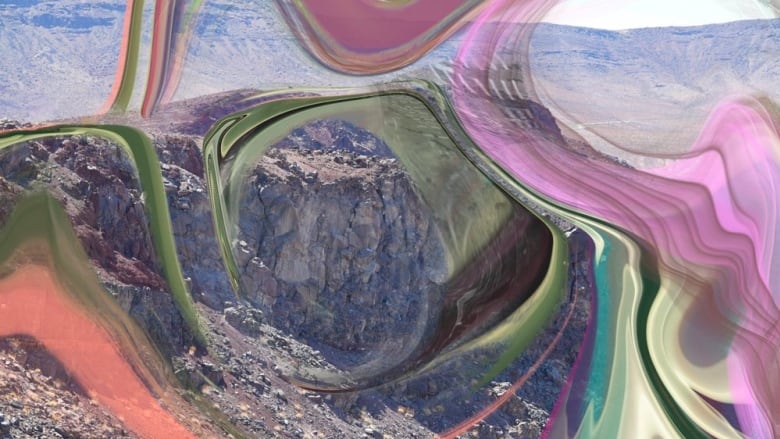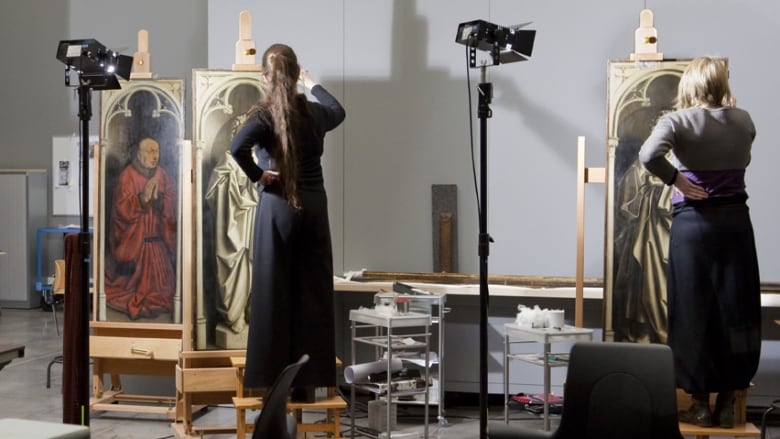3 ways digital tech will make you think differently about original art
New digital tools like AI and 3D imagining have become artistic collaborators


Digital technologies are bringing new dimensions to the world of art.
Some of these may baffle a little, such as non-fungible tokens (NFTs) that sell for millions of dollars. Yet other technologies have the opposite effect, making artworks more accessible than ever. In some cases, museums are using 3D printing to bring replicas of scarce and fragile art and artifacts to a broader public — sometimes right into their hands.
These technological advancements also raise interesting questions about what it means to produce an "original" piece of art, or to interact with one that's a digital reproduction.
The runaway popularity of immersive art exhibits that allow visitors to wander around spaces filled with projected images, for example, suggests it may not be necessary to stand before an authentic Gustav Klimt or Vincent van Gogh canvas in order to appreciate the artist's work.
Spark host Nora Young spoke to artists and experts in the field of digital art. Here are three ways technology, and the artists who use it, are challenging our notions of what defines original art.

1. 3D technology can produce exact copies of precious art and artifacts
If you can walk around it and view it from every angle, or even pick it up and touch it, does it matter if the object in question is the original? Celebrated Canadian large-scale photographer Ed Burtynsky says there's still something special about being in the presence of a real-deal masterpiece, but in many cases, 3D technology allows us to engage with objects that would otherwise be unavailable to us.
Burtynsky, founder of the Think2Thing 3D imaging and printing facility, has embraced this tech in various aspects of his work, calling it "photography 3.0." Past projects include one he did with the Royal Ontario Museum in 2014 for an exhibit about the ill-fated ships of the Franklin Expedition in the 1840s.
Burtynsky and his colleagues produced a 3D-printed model of the brass bell from the HMS Erebus as it appeared when discovered on the ocean floor in September 2014. When it was brought to the surface, the bell had to remain in the same salt water in order to keep it from breaking down.

"We had access to it for about three hours," said Burtynsky. "They had to keep spraying it with that same salt water to keep it from oxidizing."
Working quickly, the team captured around 3,000 images and used them to replicate the brass bell, which museum-goers could get up close and personal with at the travelling exhibit.
His team also used 3D printing to reproduce 30 Musqueam artifacts, such as a bowl carved in the shape of a turtle, knives and pendants, in possession of the New York Natural History Museum.
"Because they weren't the actual sacred objects, the Musqueam people could handle them," Burtynsky said.
"It was a really interesting project to create these objects that represent them, but aren't them, and yet have all the kind of feeling and interactivity and the same size, the same scale, the same texture, the same colour, and all of that."
These kinds of projects are happening all over the world. At the University of Florence, for example, researchers created a replica of Michelangelo's famous David sculpture using 3D technology for its pavilion at Expo 2020 in Dubai. Closer to home, a Vancouver company is using 3D printing to produce detailed replicas of famous paintings, including by the Group of Seven, for hands-on examination in schools and museums.

2. Some artists collaborate with AI
Amelia Winger-Bearskin loves a little collaboration with "non-human systems."
The artist is a Banks Endowed Chair in AI and the arts at the University of Florida's Digital Worlds Institute.
"I think of AI as just another collaborator," she said.
Winger-Bearskin, who is Haudenosaunee (Iroquois) of the Seneca-Cayuga Nation of Oklahoma, Deer Clan, says the arts have been "driving innovation within the AI space for a while."
The result: human-machine partnerships that have led to new forms of art.
WATCH | A film adaptation of the first screenplay written entirely by artificial intelligence:
Among these, people may be most familiar with the deep-fake videos, she said, but that same technology could be applied in more benign and helpful ways. "You could have any language that's spoken in a film without needing to dub it or having lips not be in sync with the native tongue."
Winger-Bearskin was part of the team that created the first screenplay written entirely by AI to be turned into a film, under the direction of artist and technologist Ross Goodwin.
It's important to remember that behind an AI system are teams of developers and other experts who have contributed to the code.
"To say, 'Oh, well, only the artist is the creator and those people who just made the code are not, that's kind of crazy, I think, because I really think that both of them are part of this creative journey," Winger-Bearskin said.

3. AI and X-ray can restore paintings — and even reveal hidden ones
In the world of art conservation, digital tools are game-changers.
Advanced X-ray technologies, coupled with artificial intelligence, have unlocked new powers to identify an almost infinite number of colour pigments, according to a Miguel Rodrigues, professor of information theory and processing at the University College London.
"And the benefits are, by understanding these pigments we will be able to design or come up with strategies on how best to conserve paintings, but also preserve paintings," said Rodrigues, who is also lead academic on the conservation team for Jan and Hubert van Eyck's famous Ghent Altarpiece, a series of panels with paintings on both sides.

The technology can do what the conservator's eye cannot — determine which shapes and colours belong to each side of degraded panels, he said.
Machine learning can even use complex datasets from paintings in the same era or body of work to determine what the pigments might have been before the colour faded.
"I'm particularly excited about the possibility of recreating history. So just as an example, take van Gogh. It's estimated that a relatively large fraction of his paintings involve a reuse of canvas, implying that there are concealed designs within van Gogh's paintings," said Rodrigues.
"The possibility of developing AI techniques that ingest complex data sets acquired on these paintings, and then to offer us a virtual reconstruction of these concealed designs, I think is very exciting."
Written by Brandie Weikle. Produced by McKenna Hadley-Burke, Nora Young, Adam Killick and Michelle Parise.
